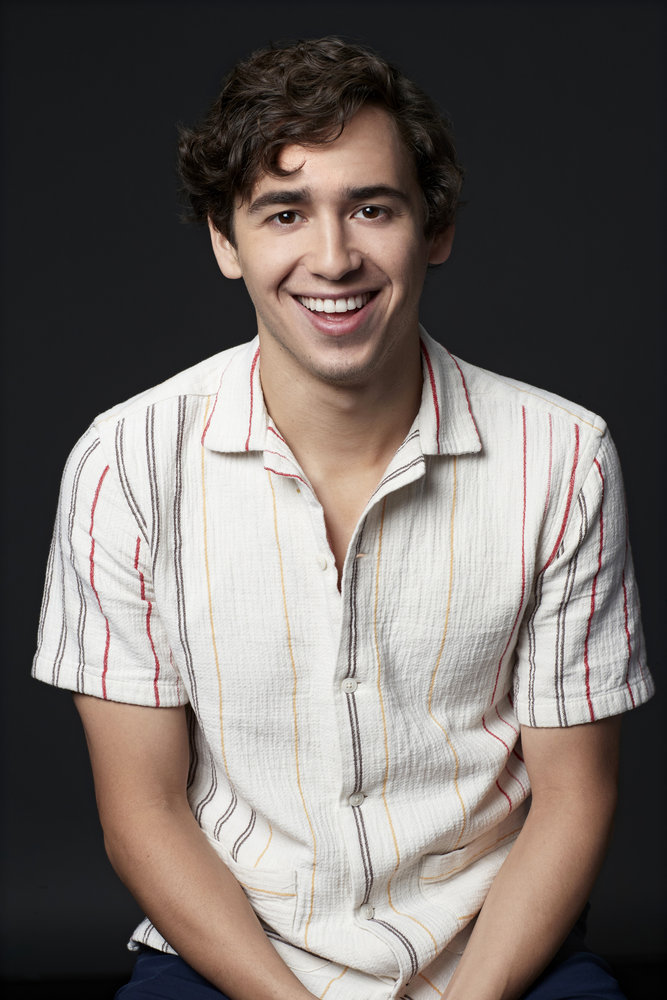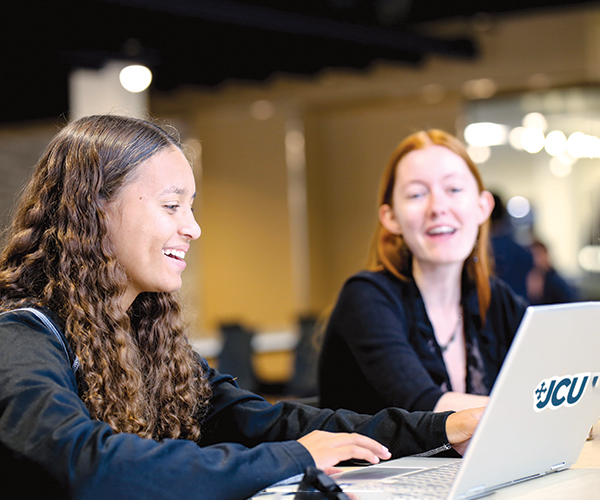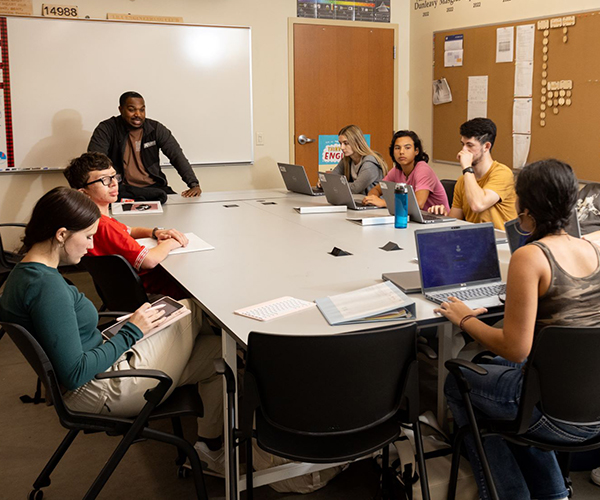Why Parents Choose Private Over Public
by Kristen Hampshire | Sep. 30, 2019 | 4:00 PM

Often, it’s not about what a public school can’t do — Northeast Ohio is rich with top-rated public school systems — it’s about what a private school can do that sways some families that direction.
That was the case for the Roth family and their daughter, Megan, who attended Shaker Heights schools with great success through her sixth-grade year.
“The choice was more about size of environments,” says her mother Lynn Roth. “She had a tremendous experience in public school, but she wanted to explore a smaller environment and shadowed for the day at Laurel School.”
Megan has an enthusiasm for learning, her mother says. “She loves school, and she was getting great grades and feedback from her teachers.”
So, why make the switch?
“We felt like there was so much opportunity for her to show herself and develop skills in a smaller environment — one-size-fits-all doesn’t work for everyone,” says Roth. After a day shadowing, Megan felt at home. “She said, ‘This is where I want to be,’ ” says Roth.
For John Salicki’s children, who attended Kirtland schools until high school, public schooling was an experience that made the family “really happy.”
But the Salickis had always planned on sending their children to Lake Catholic High School, which is Salicki’s alma mater. “We wanted more of an emphasis not just on education during high school,” he says, “but also on faith enrichment and community service.”
Yet, the decision wasn’t so easy for the Krapfs. Although Lynn Krapf is one of 10 private school alumni in her family, her husband, Doug, attended public schools his whole life and was admittedly skeptical, given the outstanding schools they pay for in tax dollars and had enjoyed for years.
But he saw something in his nieces and nephews who were attending Western Reserve Academy that he wanted for his children. That was “the evolution of the child into a young adult prepared for college — the maturity and unique ability to interact with others,” he says.
Upon further exploration, the school’s rigorous academics, opportunities to lead and worldly environment also convinced the family that this was the right place for their daughter.
“You meet students from all over the world,” Lynn Krapf says of the school. “That is very special for a 14-year-old to experience and realize how global our lives are.”
The reasons for attending a private school vary, but the process of vetting institutions and ensuring a best fit is the same. It involves shadowing, interviewing other parents and understanding the curriculum — then determining whether what the school offers aligns with your priorities.
Families should also consider the long-term benefit of private school communities, Lake Catholic High School admissions specialist Marty Gibbons points out.
“There is a lot to look at in terms of resources and networking opportunities,” Gibbons says. “You have to look at the decision from a backward design and ask, ‘What could this private school offer for my child down the road?’ ”
Why Private?
With so many great public school districts throughout the region, why do families select independent schools rather than sending their children to the districts where they are already “paying tuition” through taxes?
“I hear from a lot of families that say their child is doing ‘just fine,’ ” says Abigail Steinberg, director of enrollment management at Laurel School.
“I ask, ‘Do you want just fine for your child?’ You want excellent teachers. You want education for the whole child. You want the highest academic standards, and that is what an independent school can offer families.”
For one, independent schools are not bound to state curriculum standards. Although they are committed to meeting accreditation requirements and certainly meet state expectations, there is flexibility to evolve and adapt based on students’ learning needs.
Jennifer Biehn, director of enrollment management for Western Reserve Academy, shares how the school has moved away from a content-based curriculum that is driven by absorbing information to a competency-based curriculum that hinges on research into how children learn and how young brains develop.
This new approach optimizes learning to help students develop critical thinking for an uncertain future. “We know the jobs our students are going to be doing don’t even exist yet,” Biehn says. “We want to make sure they have the skills to solve problems, do research, make good decisions and develop good judgment, communicate thoughtfully in writing and verbally, to think creatively and work collaboratively with others.”
For example, the Krapfs’ daughter, Elizabeth, a junior at Western Reserve, takes a course where she studies cancer cells through the school’s partnership with Cleveland Clinic. “She is doing cancer immunology and trying to find cancer cures,” Lynn Krapf says.
Another part of what creates opportunity at an independent school is better access to teachers and more attention with smaller class sizes.
“We hear from our students all the time, ‘My teachers know me,’ ” Biehn says. “They support our students and take the time to get to know them so they can succeed.
They want them to thrive, and they are willing to help in any way possible.” Doug Krapf has seen the extra attention pay off for his daughter and her colleagues.
“It’s the accessibility you get,” he says. “Smaller classrooms allow for everyone to absorb information and not be intimidated, and while the academics are demanding, they accommodate each student.”
Roth explains that her daughter, Megan, is more confident about participating in smaller classes (average size is about 12 students) where she has a relationship with the other students and the teacher.
“There is an ability for teachers to really drill down and understand the child,” Roth says. “She’ll have an adviser from ninth to 12th grade that knows her and her goals and can help her advocate with teachers.”
Faith and Gender
Gibbons understands what motivates some parents to choose faith-based education for their children. The alumnus of Lake Catholic High School and John Carroll University says the Christian education is important to who he is.
“By no means is a Catholic education for everyone,” he says, “but if instilling strong Catholic values is important to your family, then you have the ability to do that. We’re addressing the social and spiritual aspect of your child and their development — and we have the ability to talk about God.”
Gibbons also points out, you don’t have to be Catholic to attend a Catholic school. “We are accepting,” he says.
Salicki, whose children transferred from Kirtland schools to Lake Catholic for high school, appreciated that the teachers shared the same values as his family.
“You know, we hand our children off to schools, and as parents, all that we can really hope for is that the administrators or educators act as an extension of us and believe in the same things we do for our children,” he says. “There were a few teachers [at Lake Catholic] that really guided our daughter in our absence, and they were very good at encouraging and mentoring and inspiring our daughter with the same types of values that we strive for at home.”
A desire to see their children ingrain themselves in community and serve others is a reason some parents choose private, faith-based education, says Pat O’Rourke, admissions director at St. Ignatius.
Aside from academics, athletics and after-school clubs, a driving force that leads families to select the school for their children is a service-based environment with a mission to do “for others.”
O’Rourke says the service-before-self mentality is pervasive on campus. “It guides everything we do,” he says. “And because all of our coaches are also teachers here, they know that yes, everyone likes to win, but the most important thing is to build these boys into men by the time they leave here.”
While some families select faith-based education, others seek a single-gender private school experience — an all-girls or all-boys school. O’Rourke says the focus at these schools can be appealing.
“They can worry about their schoolwork during the day,” he says, “not about impressing someone.” Abigail Steinberg says Laurel’s all-girls environment is special for females because girls are free to find their voice. “Every club leader is a girl — every sports captain is a girl,” she says.
For the Roth family, enrolling their daughter in an all-girls school wasn’t intentional. But they see the benefits.
“There is just less drama,” Roth says. “It’s more about school, and our daughter is super-comfortable. There’s a real growth mindset, and for girls to get that coaching in their development so they can advocate for themselves. Girls and boys learn differently.”
Decision Time
While the Krapf family was deciding between public or private school for their children, they sat down together and made a list of priorities. “Our children captained the process, and we helped them navigate both opportunities,” Doug Krapf says.
Why include your child in the decision? After all, they’re probably not paying the bills. Yet, students’ buy-in ultimately determines the experience they’ll take away from the private school, Biehn points out.
“They can’t just sit in the back,” she says. “There is an expectation that everyone is going to be engaging fully in their learning.”
Biehn suggests shadowing at the school, talking to parents of existing students about their decision and learning about the school’s curriculum.
Gibbons advises finding out what the school can offer the entire family.
“At the end of the day, it’s a family choice,” he says. “So, find out what types of organizations the school has for your family to help you feel involved with your child’s program. This is an investment your entire family is making in time and resources, so everyone has to feel comfortable with it.”
And, of course, there’s the question of cost. Parents want to know, what will the bills look like if they choose to send a child to private school knowing that college expenses are right around the corner?
“Tuition at private schools can be really daunting,” Biehn says. But the price tag can be deceiving, she adds.
Many schools are striving for a diverse student body and working to make their unique educational opportunities more accessible to students. Like college, Biehn adds, there are numerous ways to find financial support.
“Don’t let the tuition prices dissuade you from considering a school,” she says. “We work carefully with each individual family to ensure that as many of the brightest, talented, motivated kids are able to attend, regardless of their economic background.”
Trending
-
1
-
2
-
3
-
4
-
5










